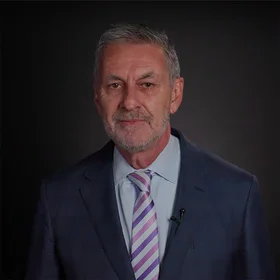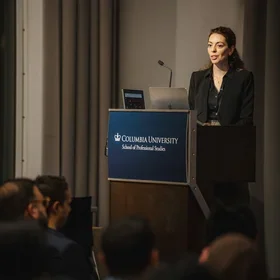This past Spring, the Global Director of HR Analytics and Strategy for Abbott Labs—Mark Baker—joined Columbia University’s School of Professional Studies Masters of Science in Human Capital Management program as an Adjunct Lecturer. Baker declares, “It was important to me that the curriculum was aligned to what I have seen as effective human capital management.” Baker brings more than 15 years of leadership experience in developing and deploying talent and technology strategies to support corporate goals. An expert in Strategic Workforce Planning (SWP), Baker has coupled human capital analytics with workforce planning to help companies pivot talent plans to align with changing business strategy.
Baker explains, “Over the last decade, SWP maintained its core objectives to identify key talent needs for the long-term, and proactively connect talent actions to ensure gaps in talent supply are met over the long-term.” But from Baker’s vantage point, a SWP maturation also took place over the past ten years, “the function integrated new ideas like connecting contract labor, gig work, STEM programs, scenario planning, simulations, D&I considerations, and external labor market data into planning.”
Today, Baker sees analytics often coupled with SWP, “identifying talent segments with skills inference, identifying levers to grow the supply of key talent segments, identification of the attributes of effective talent for key roles, and forecasting what-if scenarios.” In the current business environment, companies' priorities include better understanding the evolution of work and diversity, according to Baker. And of course, “COVID undoubtedly accelerated consideration of how digital transformation impacts jobs.”
But while some of the recent changes due to COVID, like remote work, appear positive, Baker also notes, “the unfortunate scenario of deciding who is most important to retain in the face of long-term destruction of business demand.” Inspired by his recent read of John Kay and Mervyn King’s Radical Uncertainty, Baker contemplates, “strategic planning has been perhaps too localized and dependent on assumptions about stability in our world, and we need to think more broadly in scenario planning to create resilient systems.”
This rigorous thinking, along with Baker’s ever-evolving workplace experiences, highlight how teaching at Columbia University’s School of Professional Studies Masters of Science in Human Capital Management not only benefits his students, but continues to push Baker himself. He imparts that he chose to teach at Columbia University’s School of Professional Studies Masters of Science in Human Capital Management program because of the students. “Their diverse backgrounds and life experiences lead to unexpected discussions. For me, this makes class both interesting and a learning experience.”
Learn more about the M.S. in Human Capital Management.


